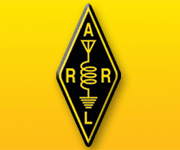US to Propose Additional Sharing of 10 GHz Band at WRC-15
The US proposal for World Radiocommunication Conference 2015 (WRC-15) Agenda Item 1.12 — to expand the Earth Exploration Satellite Service (EESS) in the vicinity of 10 GHz — supports allocating an additional 600 MHz of spectrum to the EESS (active) as a primary allocation in the frequency band 9.9-10.5 GHz, with certain limitations. The Amateur and Amateur-Satellite services have secondary allocations of 10.0-10.5 GHz and 10.45-10.5 GHz, respectively; the only current primary allocation is to Radiolocation. A study conducted by a Working Party of the International Telecommunication Union Radiocommunication Sector (ITU-R) concluded that the interference potential of EESS (active) to Amateur Radio was limited to very brief and infrequent periods.
“In this hotly contested frequency range, the best we can hope for is that sharing partners will be compatible with continued amateur access, and that is the case here,” ARRL CEO David Sumner, K1ZZ, commented.
The US proposal does not include adding the United States to a “country footnote” that allocates the 10.0-10.45 GHz band to the fixed service in some Region 2 countries — a position advocated by Mimosa Networks and strongly opposed by the ARRL. Mimosa Networks had petitioned the FCC to allow wireless broadband services in the band, which the ARRL has also strongly opposed.
The US proposal includes a provision that recognizes the Amateur-Satellite Service. “This proposal ensures that secondary Amateur-Satellite service operations in the frequency band 10.45–10.5 GHz that are advance published prior to the date of entry into force of the primary EESS (active) allocation in 9900–10,500 MHz are treated on a co-equal basis with EESS (active) operations,” the US position states. After that date, presumed to be January 1, 2017, new stations in the Amateur-Satellite Service would be considered secondary to the EESS.
EESS use of the 9900-10,500 MHz band would be limited to systems requiring necessary bandwidths greater than 600 MHz that cannot be fully accommodated within the 9300–9900 MHz band.
ARRL Chief Technology Officer Brennan Price, N4QX, has been advocating on behalf of positions favorable to Amateur Radio at WRC-15 during the US preparatory process. He notes that administrations in Europe generally favor an EESS allocation down to 9.2 GHz and up to 10.4 GHz, sparing the Amateur Satellite segment.
A US proposal on WRC-15 Agenda Item 1.4, involving the possibility of an Amateur Radio allocation in the vicinity of 5 MHz, has not been finalized. US proposals on WRC-15 agenda items that already have been agreed upon are available on the National Telecommunications and Information Agency (NTIA) website. Each proposal represents the US position on WRC-15 agenda items for possible changes to the international Radio Regulations.
Back





